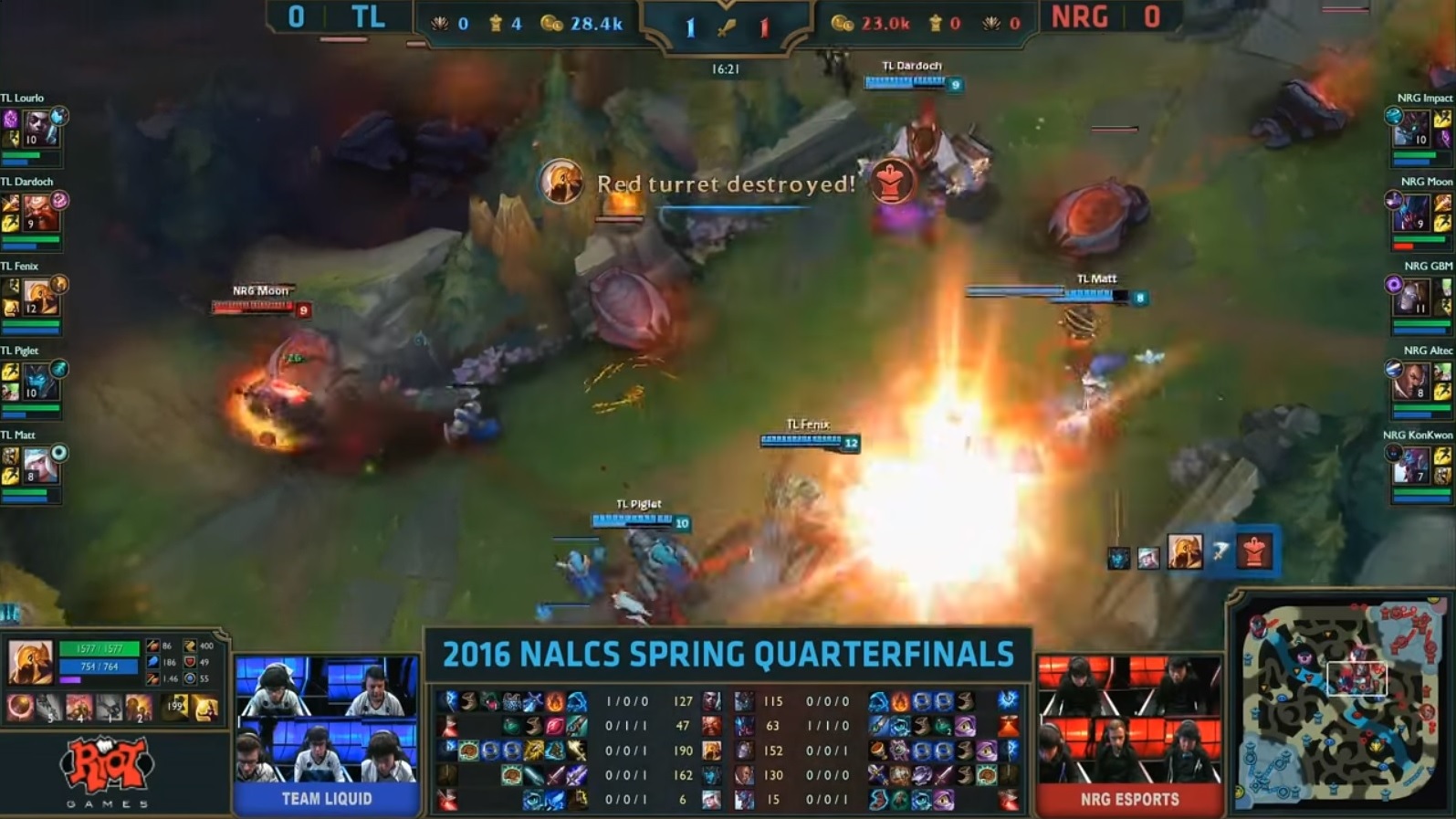When a professional League of Legends team has extremely skilled players in each of the carry roles – mid, top, and marksman – expectations are high, and rightfully so. I’m sure I wasn’t standing alone at the start of this split when I predicted that NRG would be comfortably finishing in the top half of the LCS. Squeezing into a T-5th place finish, though satisfactory for some, definitely did not meet my expectations.
Their roster is loaded with talent. Consistently over each split, Altec has performed as one of the most mechanical marksman players in North America. Impact has proven his savvy as not only a former world champion, but also showing great adaptation in previously joining Team Impulse’s roster. GBM has shown his ability to control the tempo of a game, often exerting much more pressure than his lane counterpart. The two question marks on their team are Moon and KonKwon, and though many people may assign blame to them for faltering in the series against Team Liquid, I’m not convinced that roster of NRG is necessarily the problem.
Difference Between NRG and the Top Tier
Rather than narrating the play-by-play issues I found with NRG, I will allow some overarching statistics to tell the story of NRG’s mediocrity. Firstly, Impact leads all top laners (with 10+ games this split) with a 78.4% kill participation. Why am I bringing this up? There is an immediate contrast with Huni and Darshan, the top laners for the best 2 teams in the NA LCS, who sport a 63.9% and 62.5% kill participation, respectively. This actually alludes to an serious underlying problem – that NRG are uncomfortable being alone on the map. Their ability to win games is heavily reliant on mid-late game team fighting with their entire squad, but that isn’t what the optimal macro meta is right now. Players need to be comfortable in their understanding of how to navigate the map without their 4 other buddies; if not, players have to sacrifice a bunch of minions, map pressure, and ultimately control over the entire game.
Some other illustrating stats for NRG include having the 2nd lowest early game rating at 36.6 (Immortals leads at 67.5), the lowest first blood rate at 18% of games, and second lowest first tower rate at 35% (Oracle’ s Elixir.). In the fast meta-game of season 6, being successful in these facets is what separates the top teams from the rest. No longer can professional teams only rely on dominant team fighting from mechanical players to carry the game. Controlling the early game is the key to success.
NRG vs Liquid, Game 1 – 2016 Spring Playoffs
No match better illustrates the shortcomings of NRG than the first game of their playoff series against TL. Despite some individual heroics from NRG, including a baron steal by Moon, Team Liquid had a dominating performance from the first two minutes of the game, when they secured first blood, right to the destruction of the Nexus.
Much of the post-game analysis emphasized the duo lane matchup being heavily skewed in in Liquid’s favor, but in reality, the two marksmen had nearly identical creep score until 10 minutes in, when Team Liquid really took control over the game. The 11 minute mark saw TL take the first turret of the game, with no answer from NRG. In the next 90 seconds, Liquid would continue their push, taking an inner turret with no response once again. How does this happen?
You May Like
Regardless of what the lines of communication are actually like within the NRG team, practically speaking, it is evident that their macro shot-calling is nearly non-existent. Most of their active plays are oriented around ganking enemy champions, and often time the team has sub-optimal or simply nonexistent responses to enemy pushes.

At 16 minutes, despite an even kill score, NRG faced a 5,400 gold deficit, essentially insurmountable regardless of team fighting prowess. They had sacrificed 4 turrets without taking a single one themselves, and every single one of their players was down in minions (except Trundle with his Targon’s Brace). Much of their early game was spent scrambling around, unable to find an satisfactory engage, thus playing at the whim of Team Liquid. The lack of macro initiative by NRG gave them 0% chance of winning. Their risk-aversion in reality is just poor play, unfitting of the current meta.
Striving for Summer Success
Whether or not Moon chooses to step down from the starting jungle role is irrelevant to their success in my view, unless they are able to pick up a jungler with a complete understanding of League of Legends strategy as well as the initiative to control the game. The underlying problems with this team are almost all macro-related, an aspect of the game that is becoming increasingly controlled by the support staff in the organization.
Their coach, Hermit, had a fantastic showing with Origen. The strategic pipelines in that team were mostly decided through democratic decision making, with powerful leadership from xPeke. Hermit has, in the past, described his role as a coach as a final moderator and consolidator of voices. He has brought over much of his coaching staff from Origen, and while they had great success with that roster, NRG presents a different set of players with varying strengths and weaknesses.
Whereas transactional leadership facilitating active discussion leads to success for many organizations, an eye-test right now calls for a different approach for NRG. The team needs greater direction and technical guidance. Finding success against the top-tier competition moving into the summer split will be contingent on learning and implementing disciplined strategic play. So the question for NRG becomes this: will their strategists innovate or die?
















